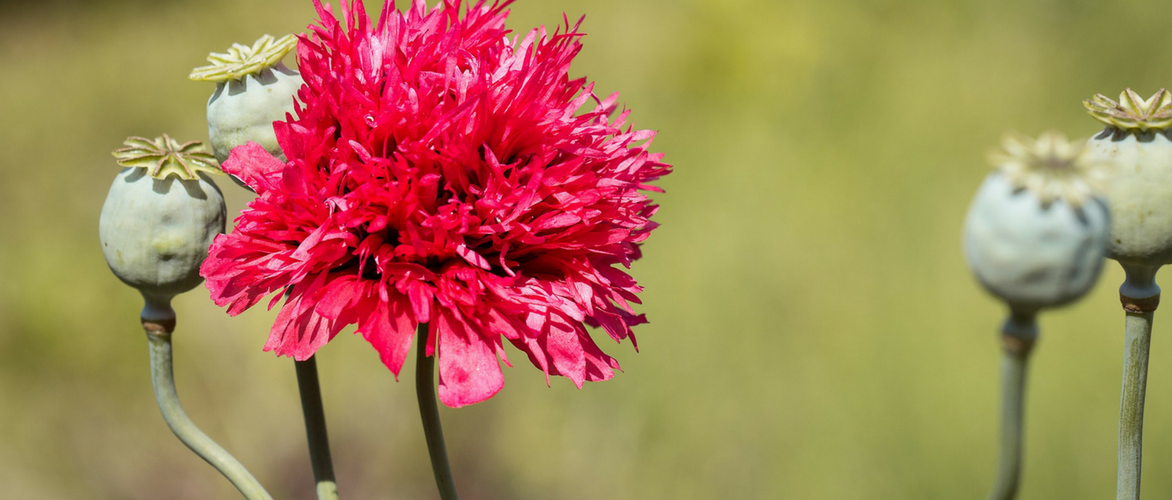
Oriental poppies: 8 companion planting ideas for the garden
Natural or fanciful
Contents
The Oriental Poppy is a very easy perennial to combine, and it is even inspiring for creating a natural spirit garden, with plants that require little care and maintenance.
It is a staple of wild gardens and contemporary meadow gardens, and it pairs wonderfully with fennel, grasses, or airy flowers like those of crambe or gypsophila. But with its long, light stems, this perennial also brings elegance and originality to more sophisticated spaces.
To fill the bare space left after its flowering, it is combined with late summer or autumn flowering perennials (Asters, hollyhocks, Dahlias, Giant Snapdragons, Heleniums, Anemones, and Stonecrops…) whose foliage develops during the summer. It is very classically associated with roses, which it helps to mask at the base of the stem, a bit unsightly.
With its strong presence, it will set the tone for a flowerbed, either by providing contrast or in a monochrome version. The variety of its colours allows you to unleash your creativity. Classically, its intense colours are paired with complementary colours in a joyful and colourful spirit, with combinations like red/blue, orange/peach, white/purple, for example, often mixed with upright perennials such as irises, columbines, and delphiniums. Pair it with species that flower at different times: other plants will thrive as the poppy begins to fade. These combinations create scenes that are wild and vibrant. Let its colour inspire your compositions!
To create a wild garden
Create a countryside garden atmosphere brimming with life by combining Oriental poppy with other cottage-style plants such as Echinops with azure globes, Sea Hollies, Hollyhocks, Achilleas, and Nigellas. Or why not plant it at the base of an ornamental Artichoke for a stunning decorative effect? To accompany it, look for vintage flowers such as vivid or faded Dahlias, irises, old roses, peonies, and Madonna lilies (white lilies). A charming jumble that evokes the allure of forgotten gardens.
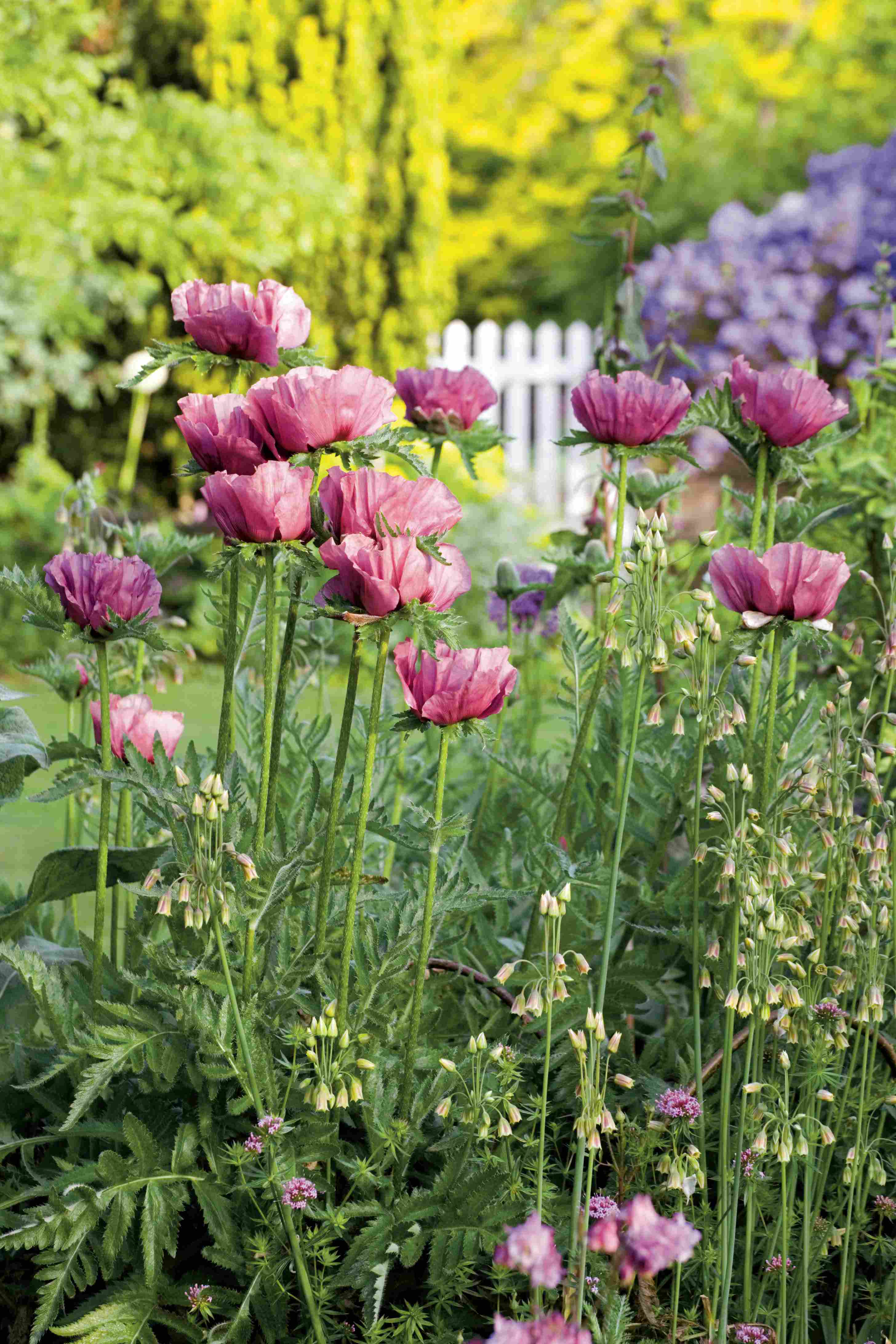
The Papaver ‘Pattys Plum‘ brings a sense of nature, freedom, and authenticity
Read also
Oriental poppies: how to grow themTo bring a cheerful and expressive touch
Flowers of the sun par excellence, whether they are scarlet (‘Turkenlouis’) or pink (‘Princess Victoria Louise’), the large crumpled corollas of the Oriental poppy will brighten up any sunny borders. Take inspiration from its colour to create: a romantic atmosphere of an English garden with ‘Queen Alexandra’ with its soft colour and very simple flowers, meadow effect with ‘May Queen’ and its orange-red… In combination with other upright perennials, such as Cosmos, Asters, Delphiniums, Columbines or even with the tall upright spikes of Lupins, it will create a lively and vibrant scene that requires little maintenance. So many varieties that will allow you to stagger the flowering periods. The Mulleins (verbascum), quite spectacular with their tall flower spikes and greyish foliage, accompany the poppies very naturally. A few clumps of Salvia x sylvestris or Salvia nemerosa with intense blue flowering will provide a perfect backdrop to the romantic beauty of a pastel-hued poppy (‘Clochard’). In the same spirit of lightness and harmony in blue-pink tones, it adapts very well in small groups of three plants with lavenders.
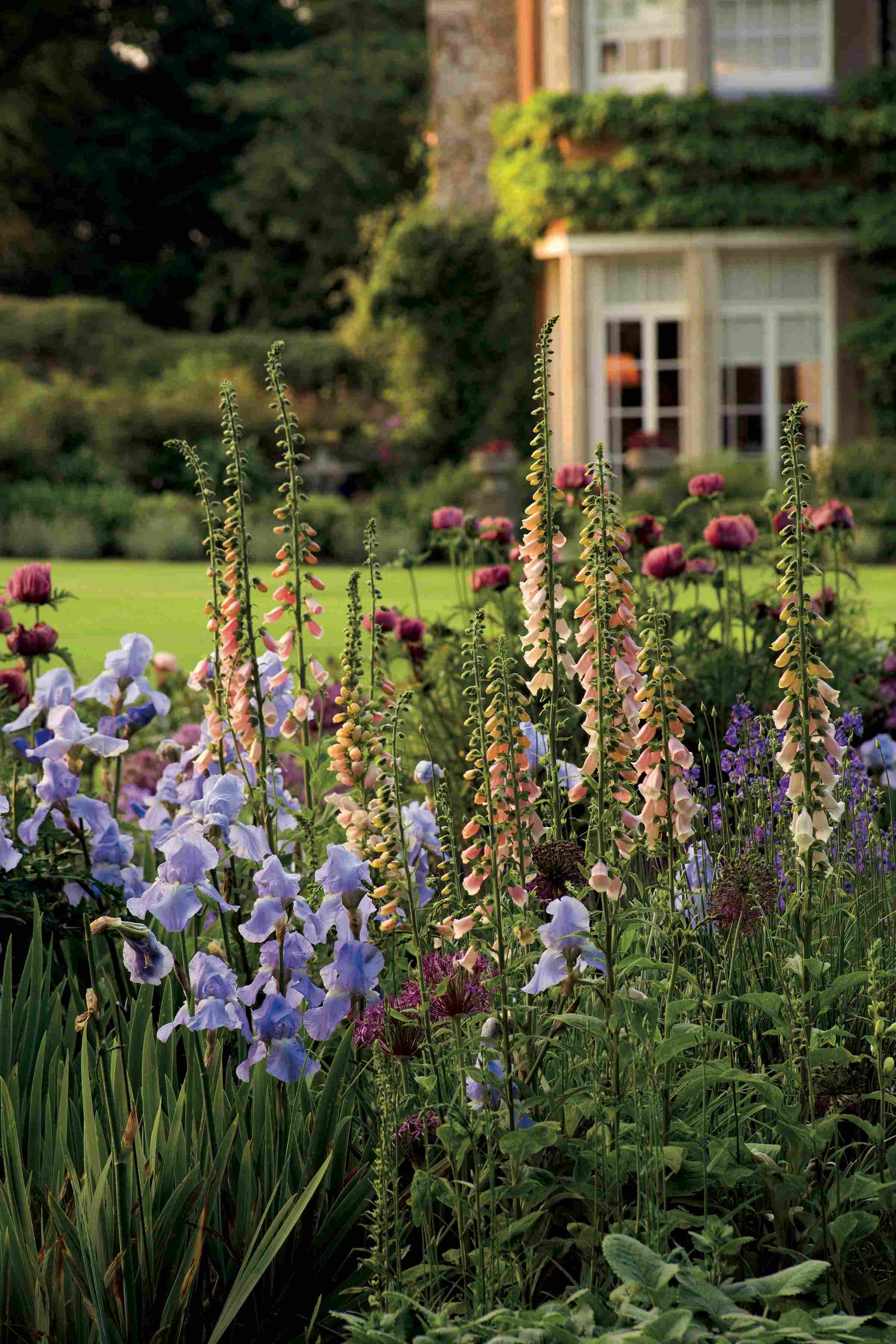
Iris ‘Jane Phillips’ – Digitalis ‘Suttons apricot’ – Papaver orientale ‘Patty’s Plum’
Discover other Papaver - Poppies
View all →Available in 0 sizes
Available in 1 sizes
Available in 0 sizes
Available in 1 sizes
Available in 2 sizes
Available in 1 sizes
Available in 3 sizes
Available in 3 sizes
Available in 3 sizes
To hide the unsightly base of a climbing plant
The upright and bushy habit and the large, deeply lobed leaves also help to soften the stiff habit of roses and conceal the bare base of a climbing plant like a clematis. The diversity of colours in Papaver orientale allows for contrasts or harmonies of pure tones: blue clematis and the ‘Beauty of Livermere’ poppy, which bears enormous dark red flowers, white rose paired with the poppy ‘Perry’s White’ with its large white flowers.

Planted in the foreground, the Beauty of Livermere poppy will dress the somewhat bare base of a climbing rose or clematis.
A light and graphic style with grasses
Of all sizes and colours, grasses adapt perfectly alongside meadow flowers in natural or more contemporary gardens. These plants that undulate at the slightest breath of wind animate the flowerbeds in an airy manner and contrast beautifully with the colourful poppy flowers. Planted in numbers, Stipa tenuifolia (angel hair) and Pennisetum create a backdrop throughout the year for Oriental poppies as well as for other plants that provide contrast or recreate harmony between two overly strong shades.
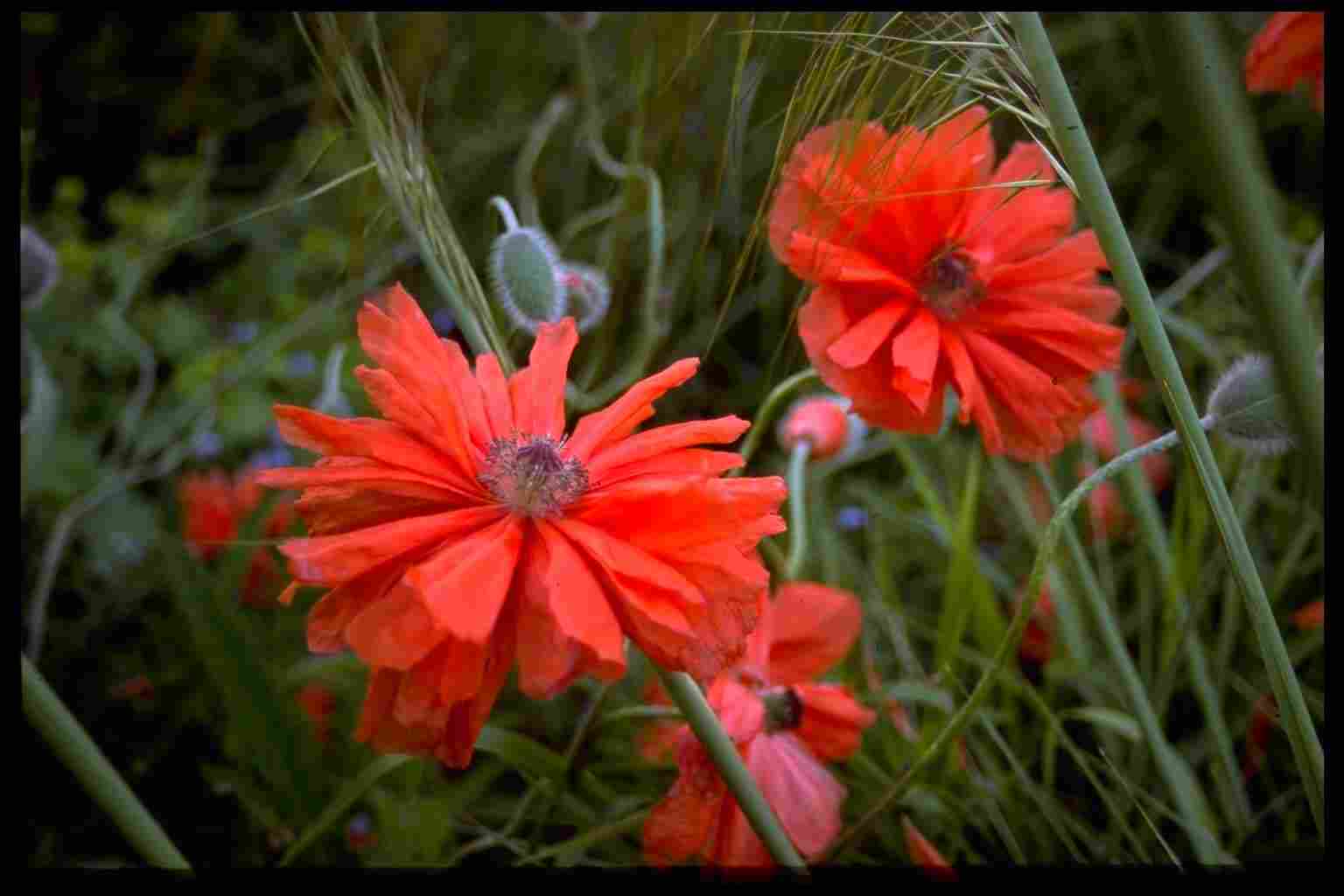
The roundness of the flowers of May Queen poppy enhances the graphic aspect of the grasses
Black and white: for a contrasting harmony
Prune or blood plum varieties like ‘Patty’s Plum’ or the incredible ‘Royal Chocolate Distinction’ contrast fancifully in a black and white garden and pair perfectly with ‘Black Knight’ Irises, white Digitalis, hardy geraniums with purple foliage and white flowers, or with a diamond grass in the background of the bed.
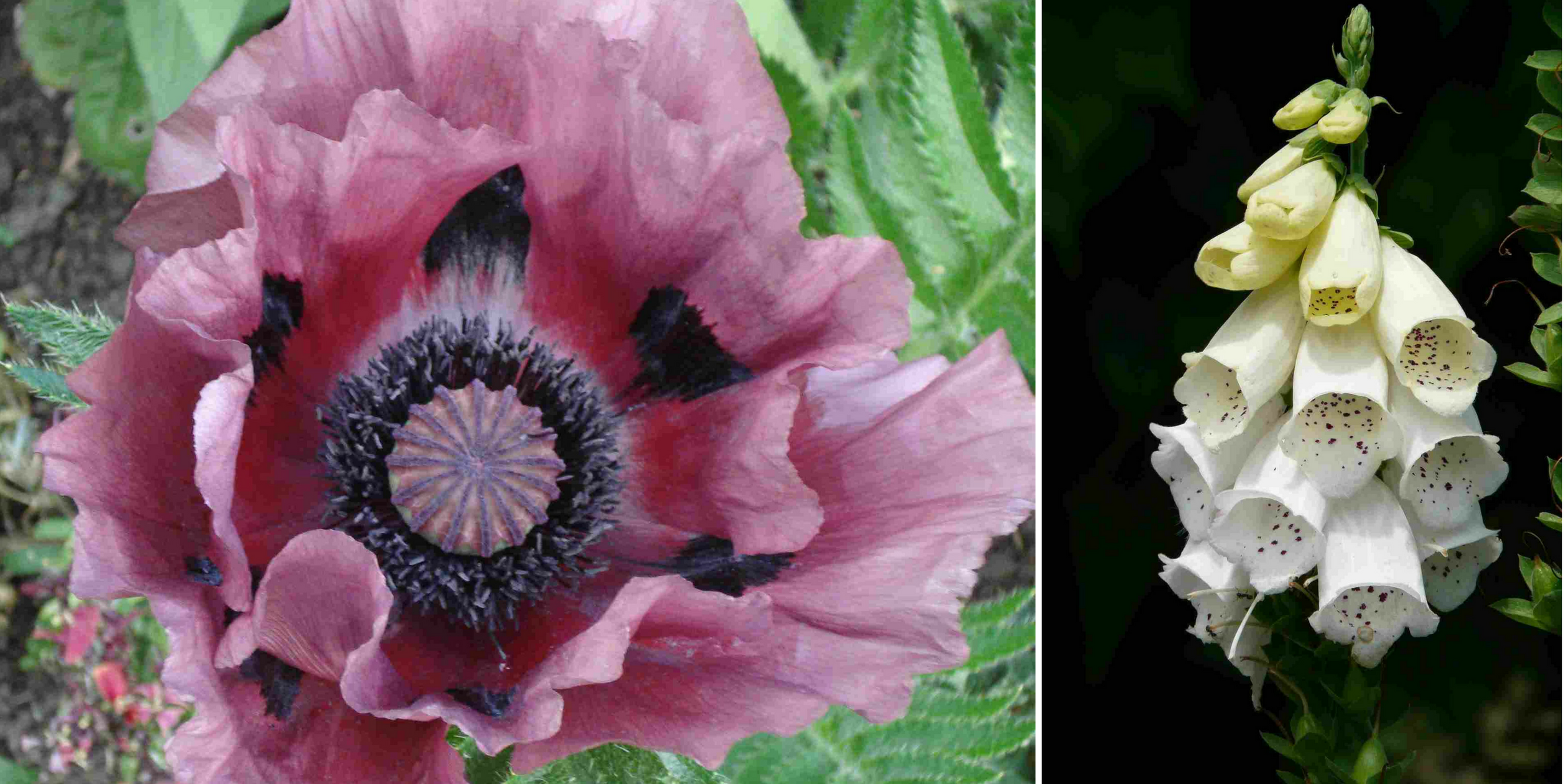
The Papaver ‘Patty’s Plum’ and the Digitalis ‘Silver Fox’ pair perfectly
To bring authenticity to a mixed border
Under a natural and abundant appearance typical of English gardens lies a thoughtful consideration of plant selection, their placement, and their colours: Oriental Poppies with their simple and rustic look flourish naturally alongside climbing roses or bush roses, shrub peonies, and clematis (to be planted in the background). Combine them with other perennials such as Foxgloves, Irises, Echinops, hardy geraniums, Columbines, Gypsophila, Steppe Lilies, Salvias… Accent these opulent and graceful perennials with Allium giganteum or Agapanthus with white or blue umbels. In a word: mix to your heart’s content!
With fennel for a natural and whimsical touch
Oriental Poppy pairs wonderfully with the dark, finely cut foliage of bronze or yellow fennel. Light and airy, its coppery foliage contrasts with the imposing, full, and delicately crumpled corollas it showcases. For a look that is both surprising and aesthetic, favour white, pink, or reddish-orange flowers.
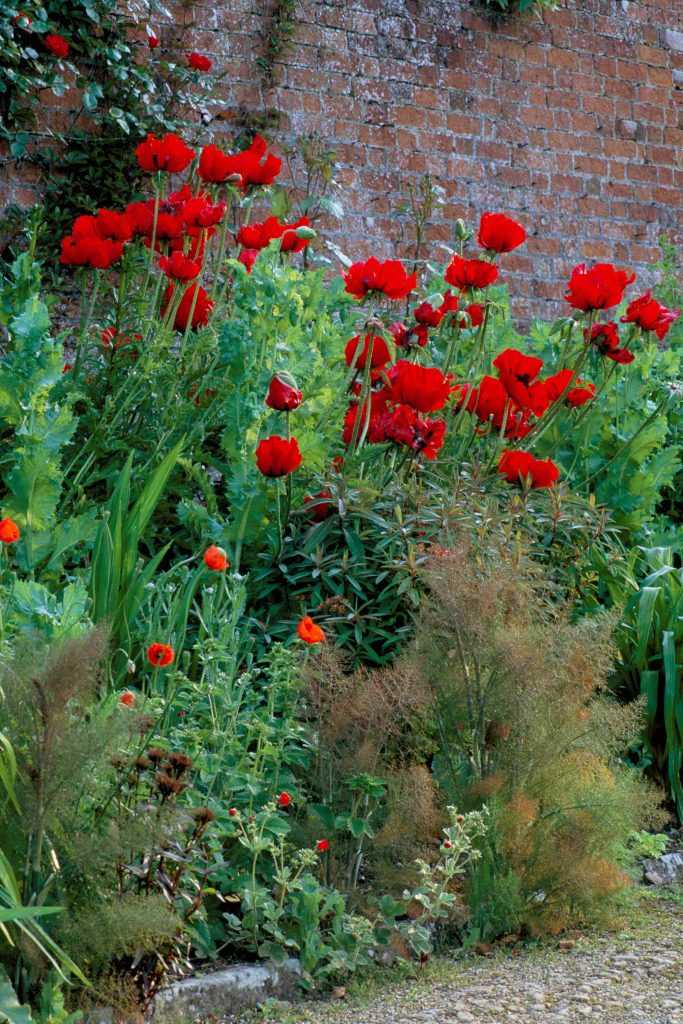
Papaver ‘Beauty of Livermere’ – Papaver somniferum – Bronze Fennel
With perennials that flower in late summer or autumn
When the foliage disappears at the end of summer, the Oriental Poppy leaves a large gap: to avoid a too bare mass, pair it with Wormwoods, Lavenders, Asters and Nigellas, Nepetas with light flowering or with tall annuals like cosmos. Also consider associating it with non-flowering species (ferns, grasses…) and other late-flowering perennial plants whose foliage develops during the summer, extending from late September until the frosts: Echinacea, Anemones and autumn stonecrops. This will help to prolong the beautiful season until winter.
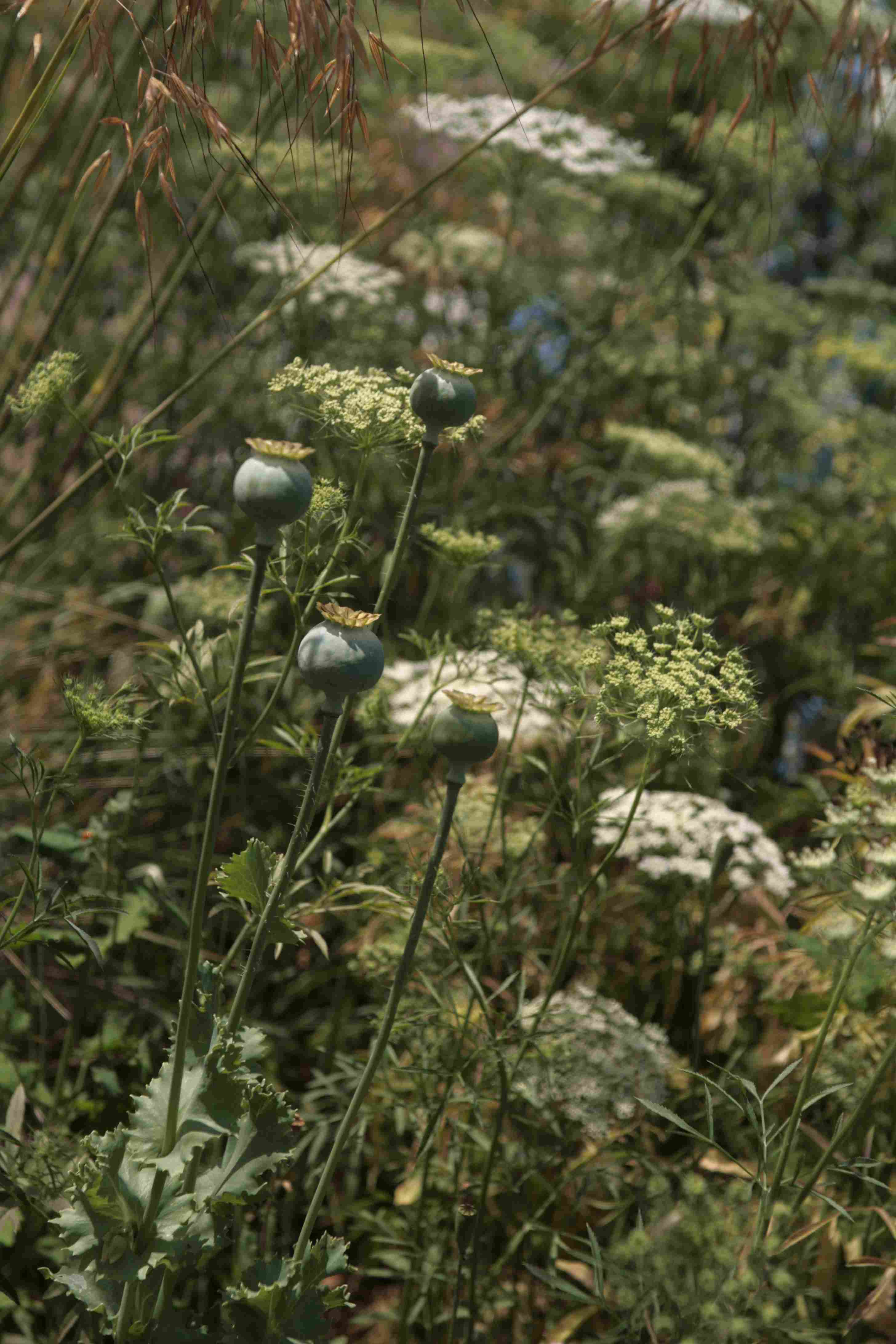 Remember to pair the Oriental Poppy with species that still flower when it no longer does
Remember to pair the Oriental Poppy with species that still flower when it no longer does
- Subscribe!
- Contents































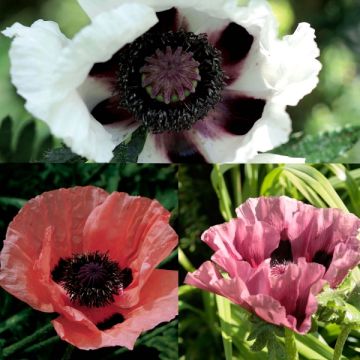
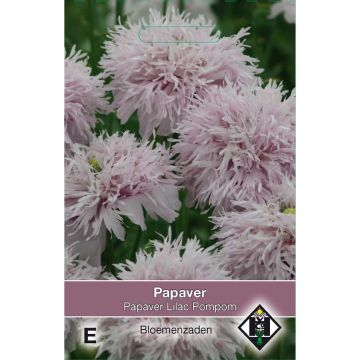

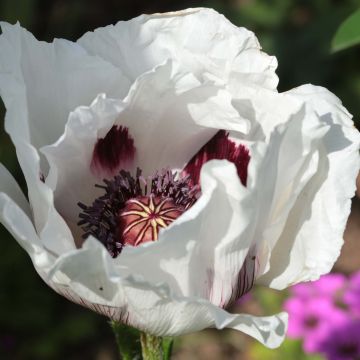
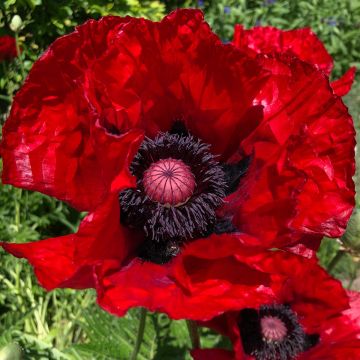
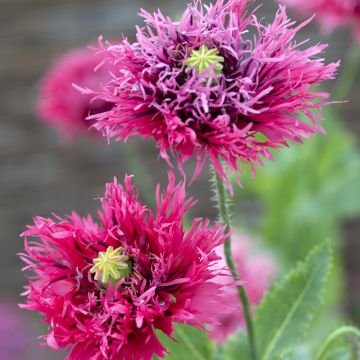
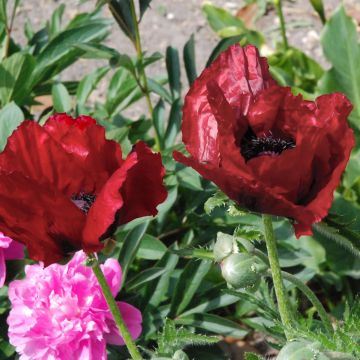
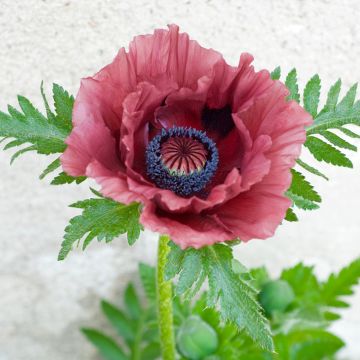
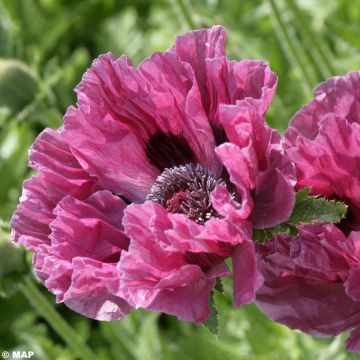
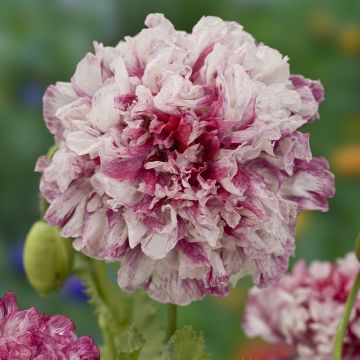
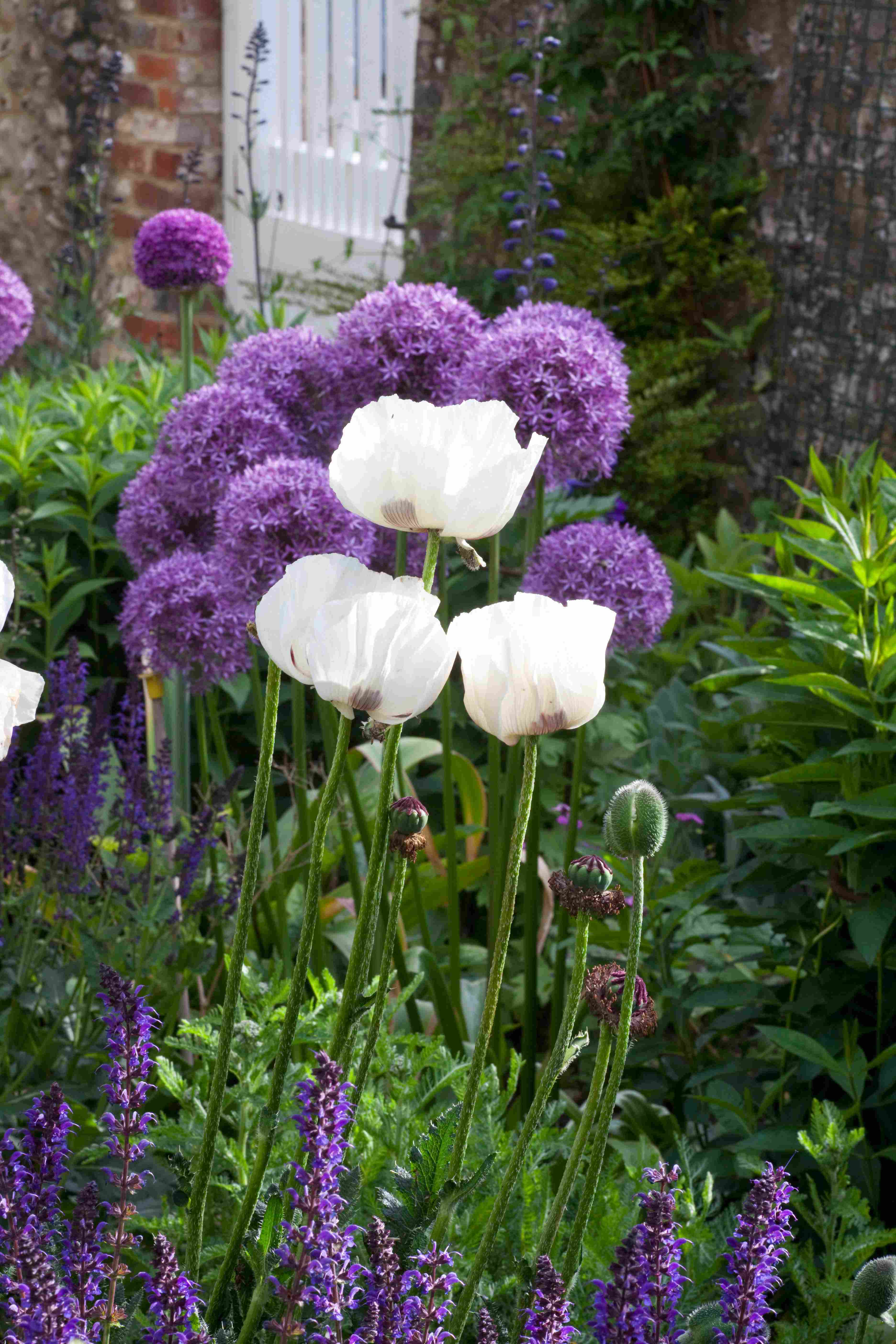
Comments